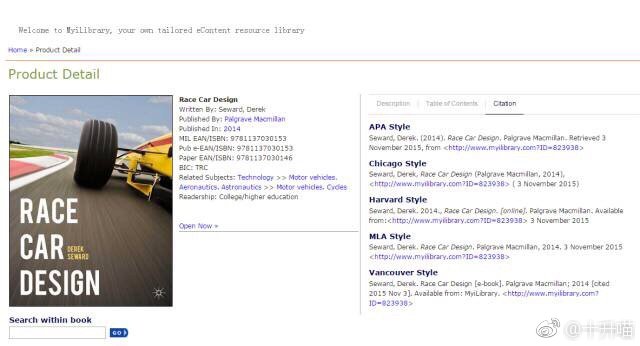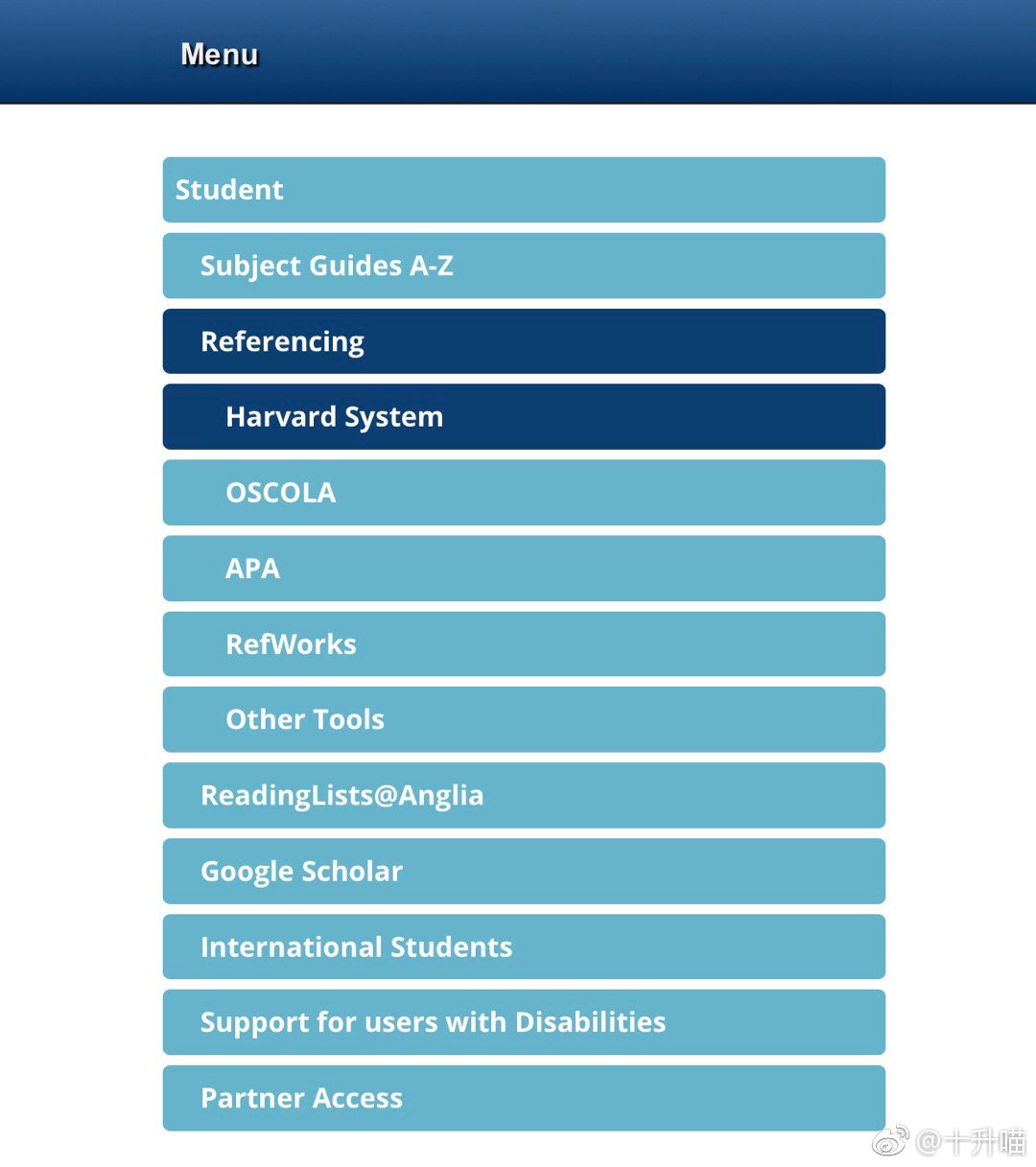C6.2 Referencing and Avoiding Plagiarism
What is a Reference in UK Essays? How to Avoid Plagiarism?
What is a Reference?A "Reference" refers to a cited source or bibliography in Chinese. Similar to how some books include a lengthy list on the final page of sources such as books, newspapers, research reports, and website articles they referenced—including details like authors, publication dates, titles, and page numbers.
References are used in essays to support your own arguments by drawing on content from other papers, books, journals, news articles, etc. For example, if you write "The Earth is round", you cannot state this without a reference. Instead, you need to include a citation like "After Magellan’s circumnavigation, it was proven that the Earth is round (Magellan, 1400)". You cannot make a claim like this without basis; there must be supporting evidence. In other words, every argument you present must be backed by previous research to demonstrate its validity.
Alternatively, if a book contains the original passage: "Today is truly a wonderful day. I saw a rabbit in the sun, hopping around looking for carrots—so cute with its fluffy white ears that feel soft to the touch.", you cannot directly quote this entire passage in your essay. Direct use would constitute plagiarism. Most UK universities require a similarity rate below 30%, though this may vary by institution or program—always check your university or instructor’s specific requirements.
References must meet the following criteria:
Relevant to your essay and serve to support its content.
Authentic and scientifically valid—no random online content or personal blogs/diaries.
Include essential details such as author(s), title, source, and year of publication.
Common reference styles include:
Harvard style
MLA (Modern Language Association)
APA (American Psychological Association)
Chicago style
OSCOLA (Oxford Standard for the Citation of Legal Authorities)
Harvard style is the most widely used in UK universities, followed by MLA. However, many UK universities require students to use the institution’s own reference style, and some program instructors may specify a particular style. Shishengmiao reminds you to confirm the required reference format with your instructor before writing essays. Typically, this information is available on your university’s student portal, covered during freshman orientation week, or explained by instructors when assigning the first essay.
For example, my university—Coventry University—requires the use of CU Harvard Reference. However, some programs, such as accounting, may have instructors who specifically require students to use a style they designate. Therefore, always adhere to your university’s requirements for reference formatting. If an instructor specifies a style for their course, follow their guidance closely—they are the ones who will grade your work.
When you have a large number of references, manually copying, pasting, and formatting each one individually is extremely tedious and time-consuming. For this reason, I recommend using
refworks.com. This user-friendly website allows you to collect and organize all your references, making it ideal for large volumes. It is free to use via Coventry University’s institutional login. If you are unfamiliar with this platform, you can also use Google Scholar—simply click the "Cite" button to generate references in various formats.
As shown in the figures below:
The image below is a screenshot of reference tools from Coventry University’s online library. The online library is highly convenient: in addition to automatically generating reference formats, it allows you to access books remotely without visiting the physical library. Note that the number of available e-books may not be comprehensive.

As shown in the figure below, most UK universities opt for the Harvard style. For sources found online, the reference format to be listed at the end of the essay includes the author(s), year of publication, title, publisher, source link, and access date

Some universities have their own specific requirements for references. For example, Coventry University’s own CU Harvard style has slight differences, which is formatted as follows:
Notice the differences? Besides the parentheses, the author’s surname is written in full first, followed by the given name—regardless of the given name, only the first letter is used (in uppercase) followed by a period. For instance, what would normally be Seward, Derek (2014) is formatted as Seward, D. (2014) at Coventry University.
The screenshot below shows a table from Coventry University’s reference guidelines. Another difference in Coventry’s reference style lies in in-text citations: the standard Harvard style is (Seward, 2014, p.30), while Coventry University’s format is (Seward 2014:30).
Screenshot of Coventry University’s official reference format is as follows:


What constitutes essay plagiarism?
Copying and pasting large or short passages from others without using quotation marks plus citing the author and year; or including an excessive amount of others’ original text in the entire essay. Note that this includes essays you wrote yourself—any previously submitted work detected will also be considered plagiarism (self-plagiarism).
Presenting an argument in the essay without corresponding references as supporting evidence.
Only changing a few words in others’ original sentences while retaining the core structure.
Paraphrasing or reorganizing others’ viewpoints without acknowledging the source.
Shishengmiao’s reminder: When writing the essay and using a reference for a specific part, add the reference immediately—include page numbers if available. Essays range from 1,500 to 15,000 words, with required references varying from a few to over twenty. It’s easy to forget or mix them up.
Regarding plagiarism checks: Most UK universities use Turnitin and provide free checks for students. Check how many free checks your university offers and use them wisely. It’s best to run the check after finishing and self-reviewing your essay, or combine multiple essays for a single check (this is what I do). For example, my university provides one free check per essay—I first check two finished essays together, revise slightly, then check again. The similarity rate (percentage based on word count) generally must not exceed 25%-30%, though some instructors require it to be below 20%—follow your university or instructor’s specific requirements.
How to avoid being flagged for plagiarism by Turnitin? First, never copy and paste content from the internet, books, or modify just a few words in a passage. Interestingly, even original content you worked hard to write may be marked as similar to other students’ essays. This is normal—since everyone writes on the same topic, certain expressions are likely to be used first by others, making them "original to others".
Consequences of essay plagiarism in the UK?
Expulsion from the university; in severe cases, repatriation to your home country.
Failure to obtain a degree certificate and academic transcript.
All previous academic achievements being voided.
Inclusion in an academic blacklist in serious cases.
How to avoid plagiarism in essays?
Paraphrase (rewrite): After reading others’ articles, summarize or elaborate using your own words. Even your own viewpoints need to be paraphrased when restated. Never quote others’ original sentences directly—for a 3,000-word essay, you can use at most one direct quote, and it must be used appropriately. This requires strong writing skills, grammar, and logical thinking.
Additionally:
Arrange references in alphabetical order (A-Z) based on the first letter of the authors’ surnames.
Italicize book titles (see detailed instructions above or download your university’s reference guidelines for examples).
Leave a blank line between each reference.
For website sources, include the full URL and the date you accessed the site (day, month, year).
What to do if accused of plagiarism?
The UK has zero tolerance for academic plagiarism. If your essay is suspected of plagiarism, the university will first send you an email explaining the situation. There are three common scenarios:
The university gives you a chance to explain. Clearly state that you did not plagiarize—remain calm and firm. The university will typically allow you to rewrite the essay (this is the most common resolution).
After sending the email, the university will discuss the issue with you and recheck. If it’s a system error, your essay will be approved.
The university may require you to attend a disciplinary hearing. You will meet face-to-face with several instructors, who will ask questions about your essay content, references, etc. They may try to pressure you into admitting plagiarism by emphasizing consequences. Stay calm, composed, and confidently state that you did not plagiarize—explain if the issue was accidental (e.g., improper citation).



